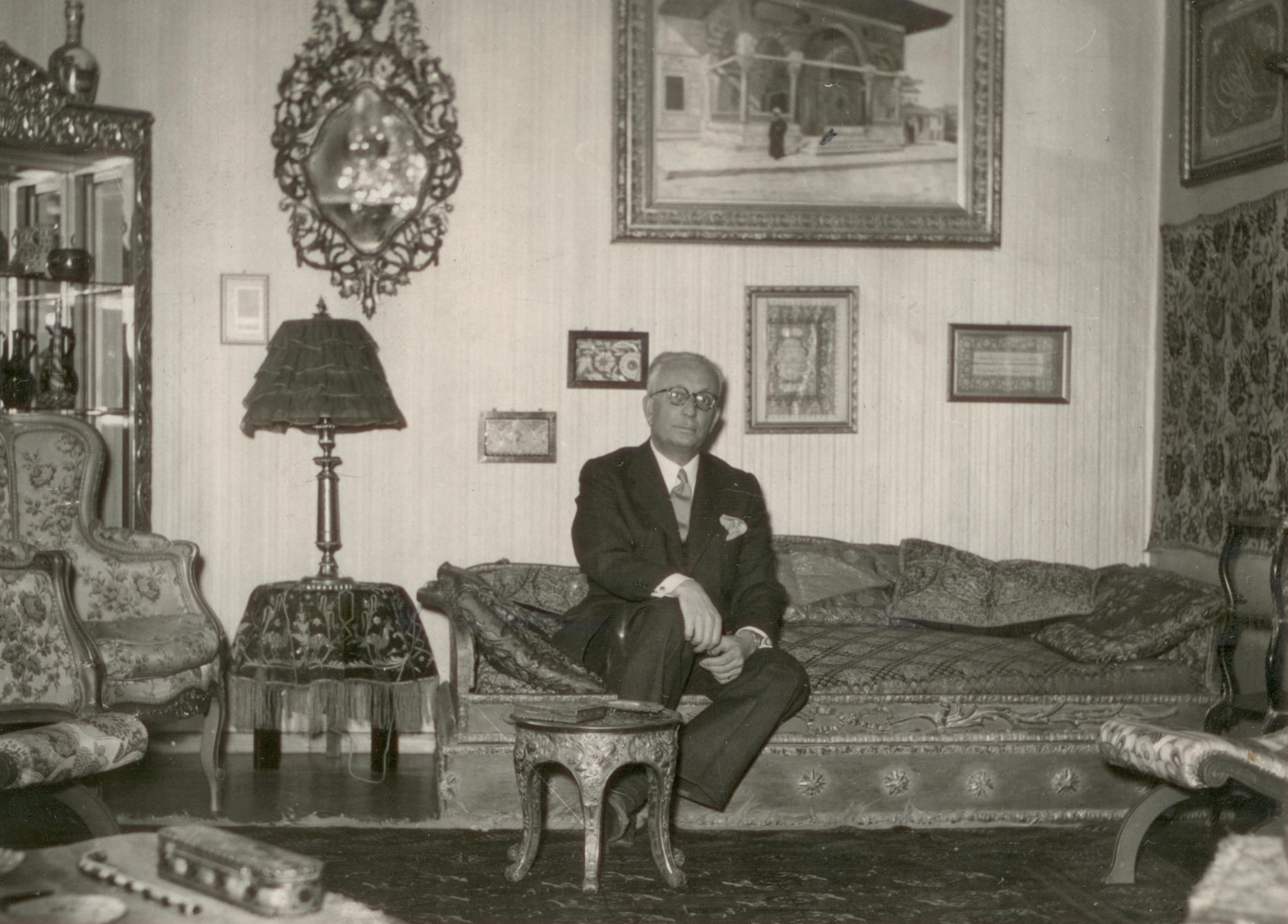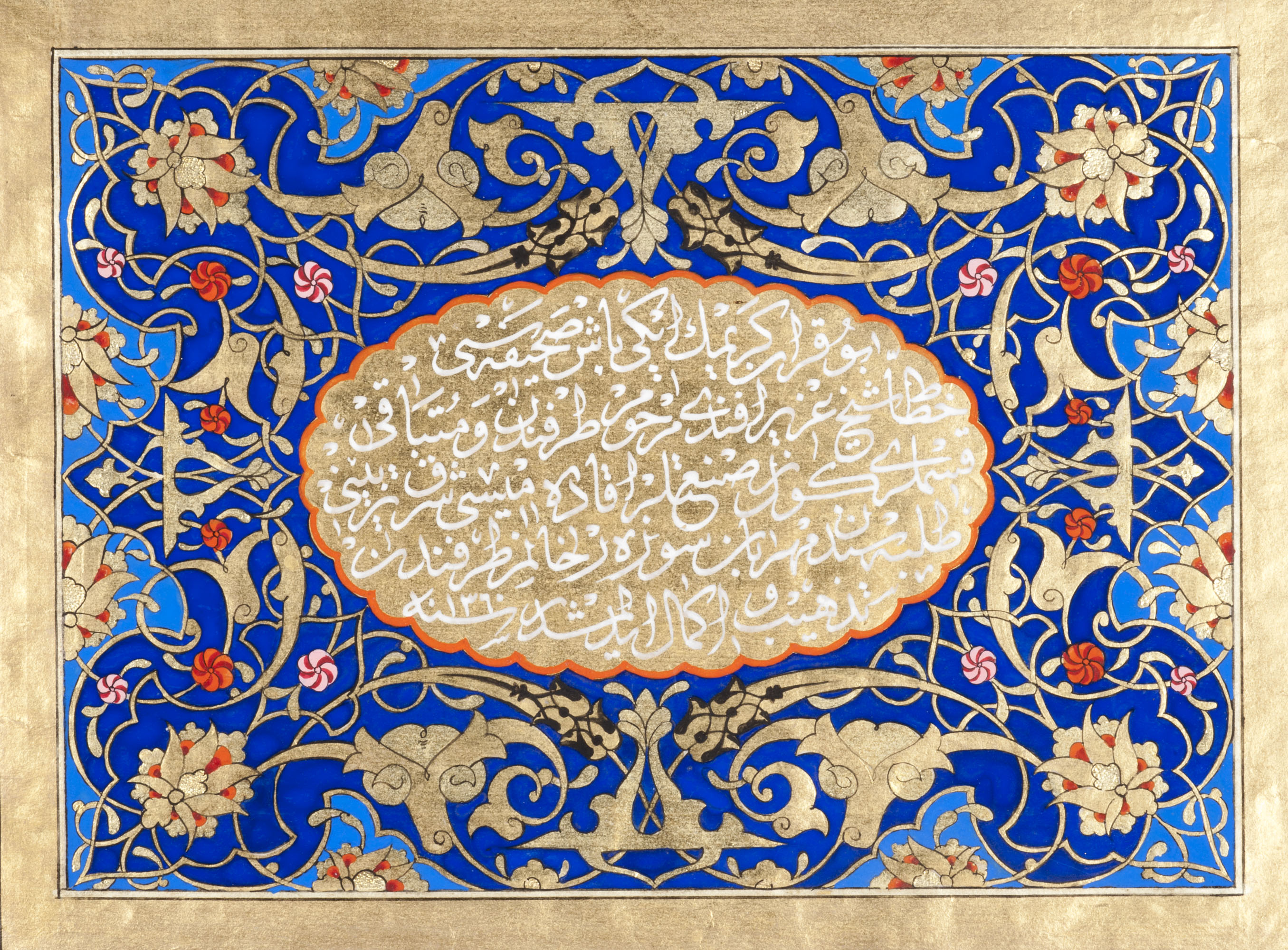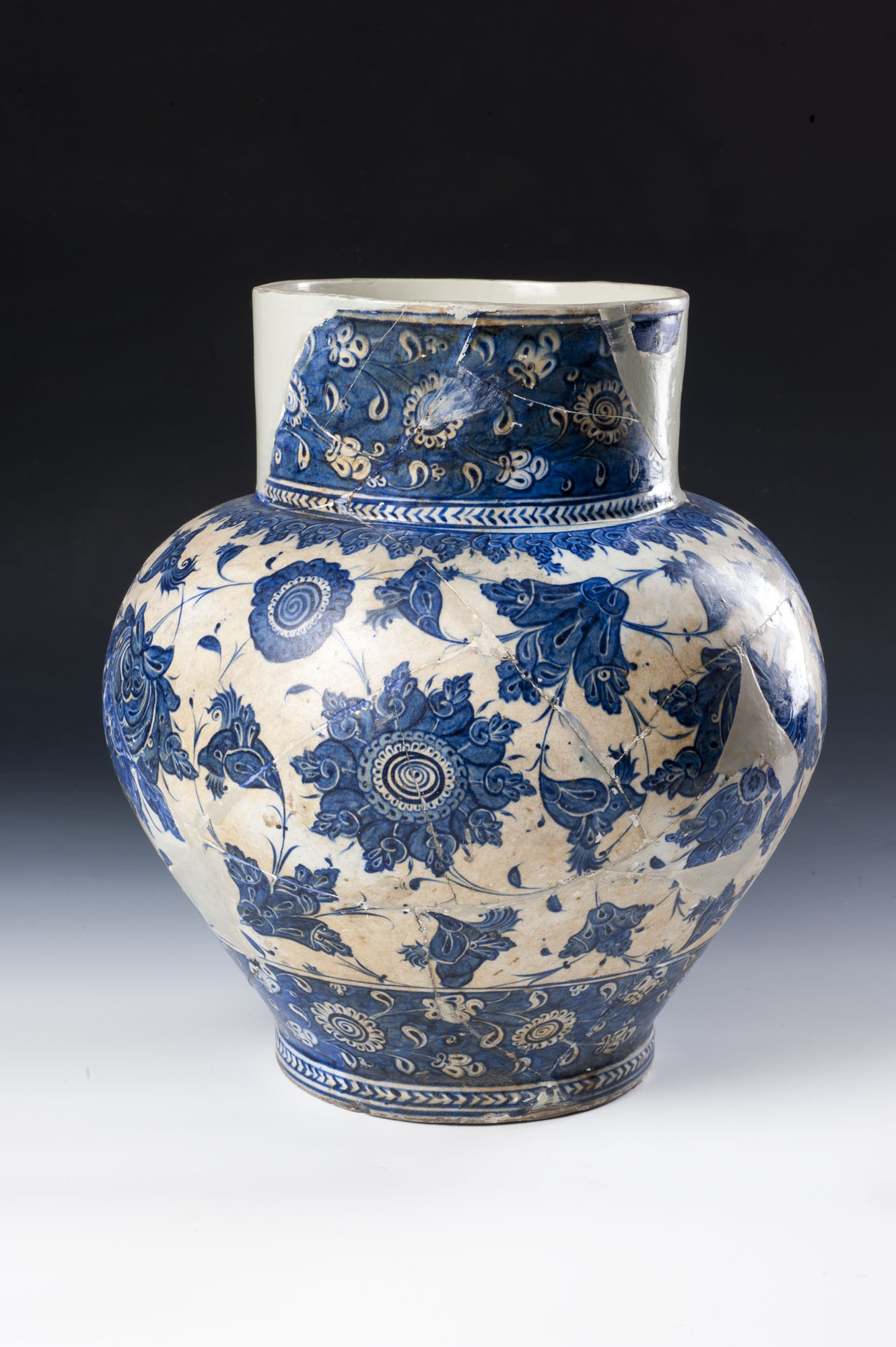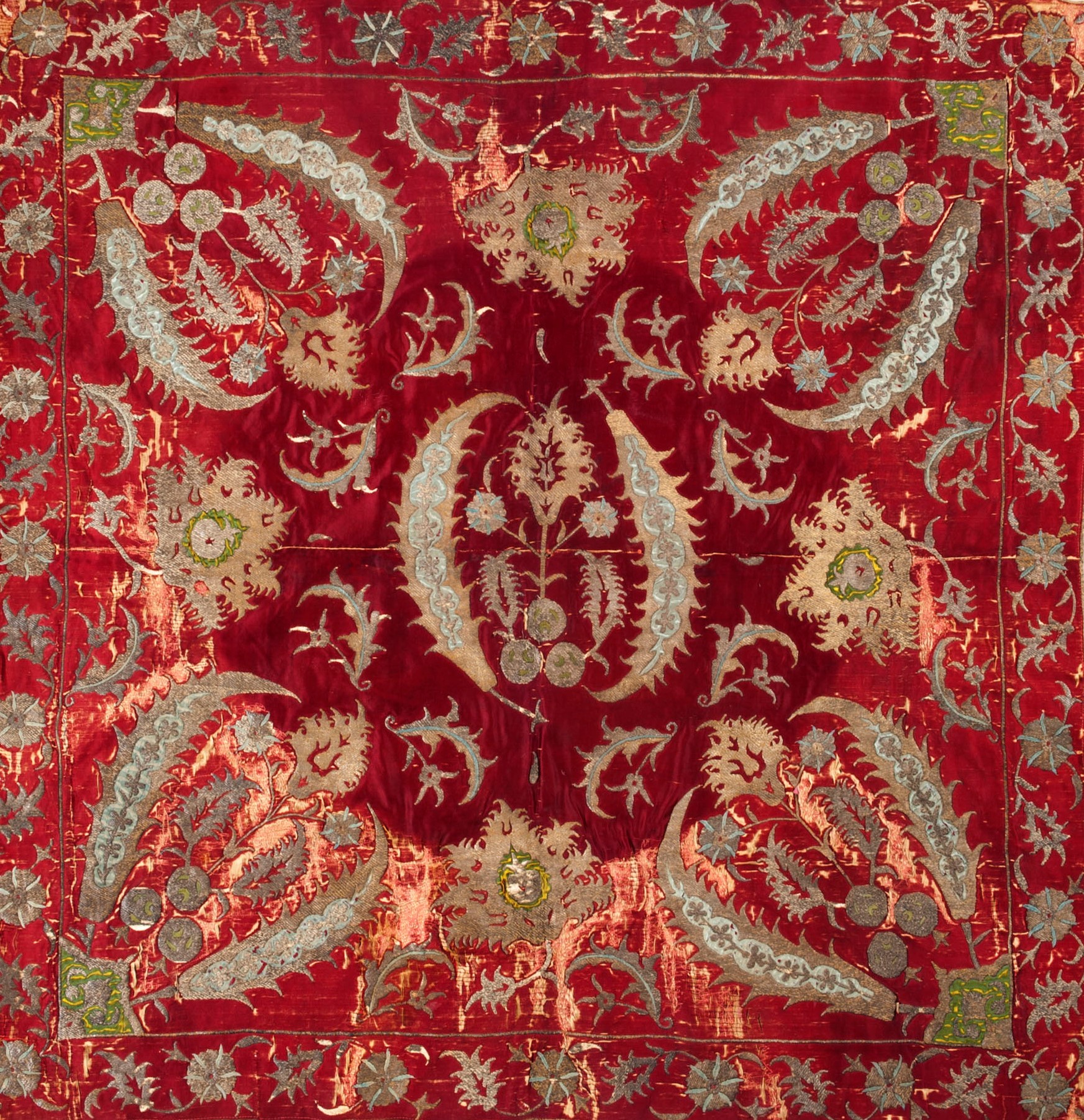
Ekrem Hakkı Ayverdi in the living room of his home in Fatih. Ayverdi Institute Photograph Archives.
The large part of the unparalleled collection Ekrem Hakkı Ayverdi began to put together, not simply for the sale of creating a collection, but to preserve and uphold a culture, is comprised of works from the Ottoman era, dated to a wide period extending from the 14th to the 20th century. Apart from these, limited Seljukid tiles, as well as ceramics and porcelains of Persian and European origin are also included in this rich collection, which he donated to Kubbealtı Academy Culture and Art Foundation.

The record indicating that after the tezhib of the Koran Aziz Efendi copied in 1345/1926 was completed by Mihriban Sözer in 1360/1941, calligrapher Halim Özyazıcı wrote the surah headings. Kubbealtı Academy Culture and Art Foundation Collection.
Ekrem Hakkı Ayverdi made these “old things” a part of daily life by integrating them into the decoration of the apartment he built on Feyzi Paşa Caddesi, Fatih in 1939, which had a modern design for the standards of the period. One can say that Ayverdi regarded family heirlooms, many of which lost their significance over time, as things of value that survived from the past into the present and thus acted with the urge to protect them. The sensitivity to embrace these values is a reflection of Ayverdi’s internalization of the Ottoman culture. Considering the number of collectors in Turkey in the first half of the 20th century, the preservation of these works, which could have been destroyed or taken out of the country for lack of appreciation, becomes all the more meaningful.

Ceramic jug with animal figures, İznik, circa 1545.
Kubbealtı Academy Culture and Art Foundation Collection.
Recognized for the exhaustive works he wrote on this history of Ottoman architecture, it is interesting to note that Ayverdi’s first academic publications entitled, XVIII. Asırda Lâle Tulip in the 18th Century) and Fâtih Devri Hattatları ve HatSanatı (Calligraphers and the Art of Calligraphy of the Mehmed II Era) are works that encompass the objects included in his collection. Ayverdi did not collect to merely preserve and display, but he also studied in depth the valuable things he owned.
Şebnem Eryavuz

Embroidered bohça wrap, İstanbul, second half of the 16th century.
Kubbealtı Academy Culture and Art Foundation Collection
Explore Ekrem Hakkı Ayverdi’s collection free of admissions at the Ekrem Hakkı Ayverdi (1899 – 1984): Architectural Historian, Restorator, Collector exhibition.